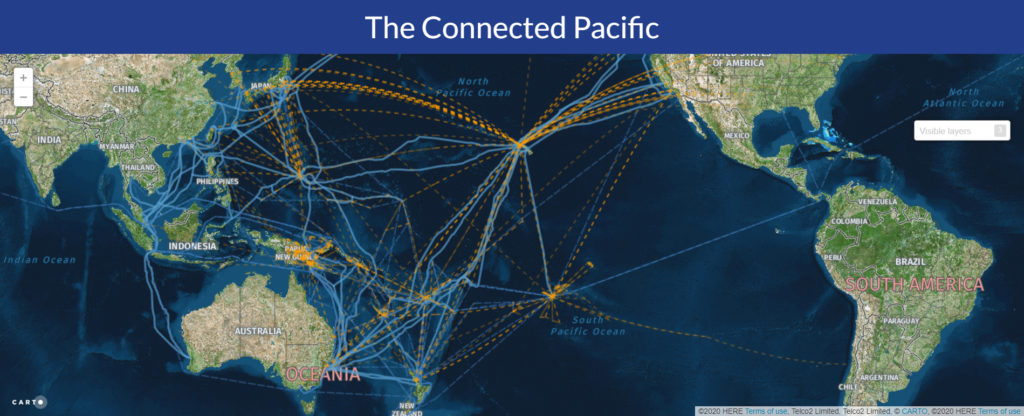Foundation Projects
A Peering Strategy for the Pacific Islands (second phase)
Telco2 Limited
Many telecommunications networks in the Pacific interconnect not directly but via international carriers in the United States or Australia. This has a profound impact on both the cost and the performance of regional traffic. While web traffic is slowed, real-time collaborations are rendered unusable, creating barriers for inter-island collaboration.
Governments, competitive carriers, Internet societies, and activists argue that direct interconnection, or peering, is the answer to these performance problems. They believe that if competitive networks are allowed to exchange traffic free-of-charge with incumbent networks, the cost of Internet will go down, and performance will go up.
Incumbent networks throughout the Pacific steadfastly refuse to openly peer with other carriers, education networks, and government networks – and a change in this behaviour is not in sight. Not only do they refuse to peer, they sometimes charge their competitors more for direct access to their networks than competitors pay for global Internet connectivity. Competitors, activists, and even governments say this is a clear violation of network neutrality. This project investigating carrier interconnections in the Pacific has shown the situation to be far more nuanced.
This project's objective was to share research collected during an earlier iteration of the project via the web in a dynamic way. This included information on physical and routed topologies, telecommunications market data, and information on the relationships Pacific Island nations have with the rest of the world.
In support of these objectives, the project has produced a website that reviews the telecommunications environment of the Pacific Islands. The site looks at each market's connectivity to the world: telecommunications, sea freight, air routes, and trade. It provides real-time statistics on carrier market share. Finally, it considers the complexity of island telecommunications through a composite case study on peering.
Many stakeholders in the Pacific do not fully understand the impact overseas interconnection has. Few look beyond the problems of their own country or organisation. This lack of understanding perpetuates cost and performance problems for all users. In some cases, it significantly lessens the impact of new submarine cable infrastructure.
Several cases illustrate the difficulties of the Pacific.
Most Samoan traffic between providers and universities routes via the United States. Technical workers at three providers and two universities are interested in establishing an exchange. No progress on an exchange has been made as managers do not recognise a business case.
Many students at the University of South Pacific (USP) in Fiji access campus resources from home via Vodafone. All traffic between Vodafone Fiji and USP routes via Australia. The overseas interconnection results in slow speeds and frustrations for students and network administrators. USP set up a temporary peering exchange with Vodafone in 2013 that vastly improved performance. Unfortunately the exchange was disestablished for political reasons.
Paupa New Guinea has two submarine cables connected to two different telecommunications providers. The providers do not have a local interconnection. A local Internet Exchange Point has had the support of local and overseas stakeholders since 2010. PNG's regulator started investigating the issue in 2012. Still to this day there isn't a local exchange point. Traffic between providers exchanges overseas.
Vanuatu was the Pacific's only Internet Exchange success story. The Vanuatu Exchange launched around the same time as a new submarine fibre cable connected the country to Fiji. For a time, traffic between Vanuatu providers and government agencies stayed local to Vanuatu. Traffic from Vanuatu to Fiji however travels via Australia.
This project catalogued demand, commercial arrangements, infrastructure, policies, and monopolies throughout the Pacific. It educated stakeholders on the commercial, technical, and performance issues around overseas interconnections.
The strategy proposed helped stakeholders to solve their own problems. The strategy is unlikely to call for peering in every country; few Island nations have the traffic to support them. It instead tried to inform stakeholders how regional cooperation can be of benefit to all.

Related:


